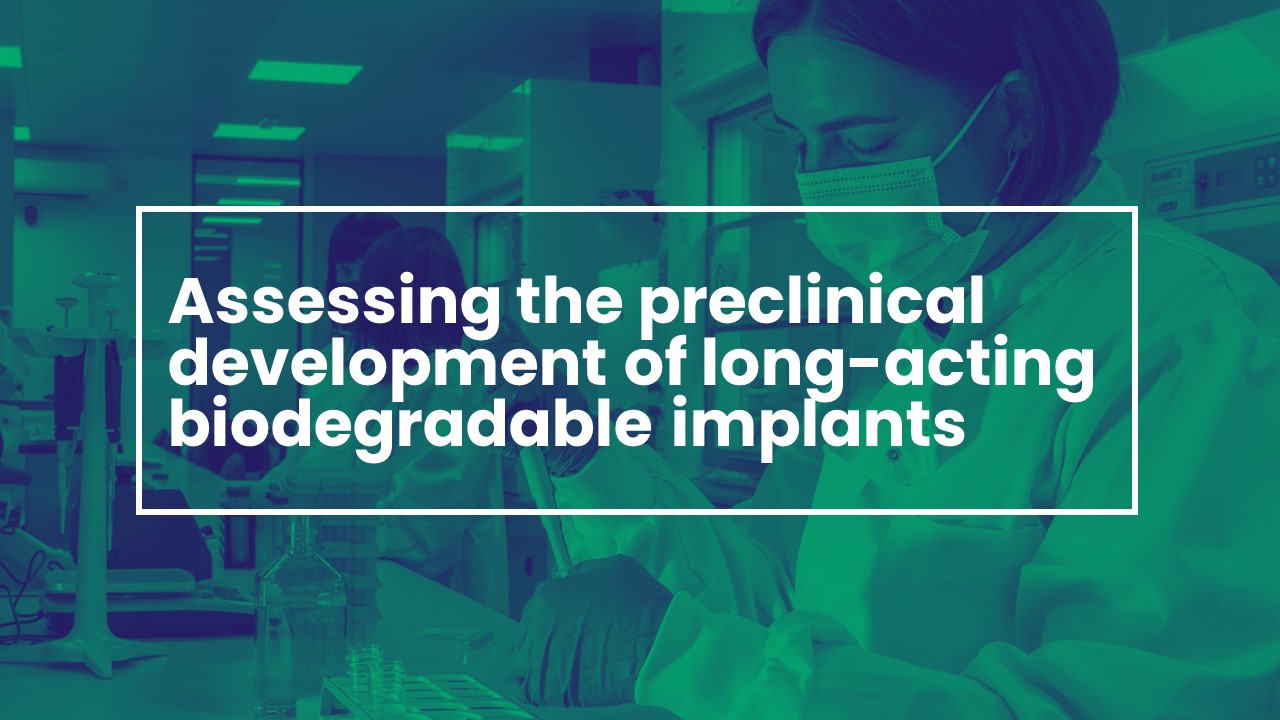
I’m Dr Meg Neary, a postdoctoral research associate at the Centre of Excellence for Long-acting therapeutics (CELT). My work involves preclinical development of long-acting antiretroviral therapy (LA ART). LA ART provides exposure to a drug over a long period of time. This means instead of taking oral tablets, the contents of which are eliminated by the body over a very short period of time, patients can take LA ART and have effective exposure to the same drug concentration for a period of weeks, months or years.
The impact of long-acting medicine
LA ART is becoming increasingly important due to their unique properties which can improve adherence to medication and reduce the need for chronic oral regimens. Orally administered treatments that require daily tablets can present patients with various difficulties, such as complex delivery modes, pill burden and stigma around disease, all of which make maintaining adherence to tablets a massive challenge.
Last year we saw a huge step forward in the UK as the first LA ART for HIV treatment was approved for use in England and Wales. For those eligible, an intense chronic oral regimen of taking tablets daily could be replaced by just 6 injections per year.
LA ART has the potential to help the millions of people living with HIV but, in order to take these medicines from the lab and into the hands of the patients, there are various preclinical and clinical challenges to overcome.
CELT’s Emtricitabine (FTC) study
I have been working on a grant funded by National Institutes of Health (NIH) using Polymer of Prodrug (POP) chemistry to analyse both the in vitro and in vivo properties of a drug commonly used to treat HIV called emtricitabine (FTC).
This research was a collaborative effort between Professor Andrew Owen’s CELT Pharmacology Group and the Rannard Group led by Professor Steve Rannard. The interdisciplinary nature of our research is important and allows us to quickly find impactful and innovative solutions to preclinical challenges we face in the development process.
We analysed the release of FTC being delivered from innovative biodegradable implants. We did this with the long-term goal of providing patients with novel treatment that is optimised to improve the quality of healthcare for millions of people living with HIV.
The technology used was developed in CELT labs by Professor Steve Rannard and his group. It involves depositing an implant made up from polymers under the skin, FTC is then released slowly providing LA drug exposure.
I presented initial data on this project at CROI 2021, you can watch my webcast here.
To progress this work further, our latest study was implemented in order to extrapolate in vitro data, taken from lab studies, to make in vivo predictions of pharmacokinetics for this technology to ensure safety and efficacy of FTC delivered via subcutaneous implant.
Our process
We assessed the in vitro release profile of 25 different FTC implants made up of varying chemical profiles. From the 25 implants we screened, 9 suitable candidates were selected to proceed to the in vivo pharmacokinetic (PK) animal study. Of these 9 candidates, we found two implants which provided drug exposure for 28 days in rats.
A comprehensive mathematical model was implemented to scale up and extrapolate the data found in each phase of the study to determine an in vitro-in vivo correlation (IVIVC). The IVIVC tells us how good our in vitro lab studies were at predicting what we saw in our in vivo animal models which is important because the more information we can get about the performance of the implants in in vitro studies, the better our candidate selection can be for the proceeding animal studies.
For example, if the correlation between the in vitro data and in the in vivo data is high, the in vitro studies are highly predictive of the in vivo data. This gives us confidence that the candidates would perform well and would therefore increase the likelihood of formulations going through to scale-up and clinical trials.
What happens next?
This experiment demonstrates good progress but more work is needed to improve the correlation between our in vitro and in vivo studies. We are currently developing new in vitro methods which are more representative of the biological environment seen in in vivo studies. We are using fluidics models, 3D cell cultures and transwells to try to better mimic the in vivo environment in vitro in our lab.
I presented details of this study at the International Workshop on Clinical Pharmacology conference in Barcelona. Click here to view my research poster.